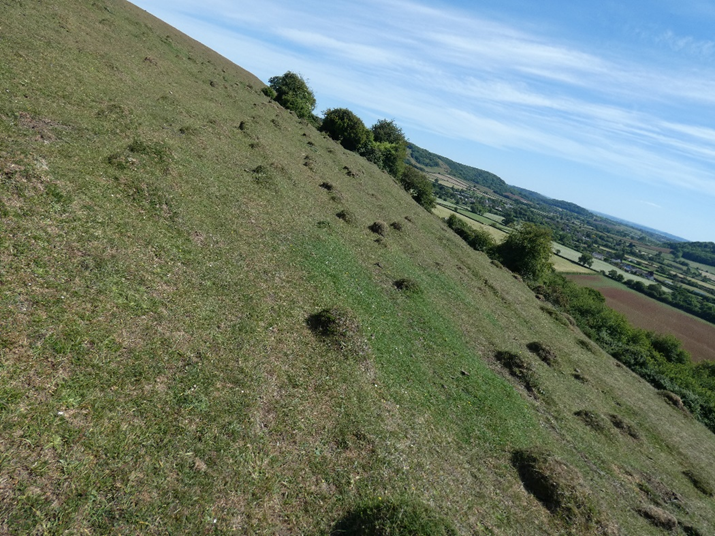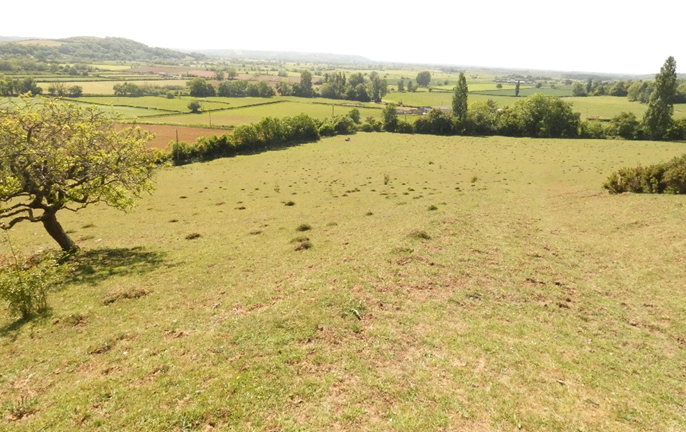By way of a first report Susie and I have worked on this overview. We’re really excited to be Large Blue volunteer rangers for the National Trust this summer. I’m James, a furloughed Membership Manager for RSPB in Somerset & Dorset and I have a background in zoology and nature conservation. Susie is a plant enthusiast, very keen walker and explorer and still working through the Covid-19 lockdown as a Social Worker. Susie and I have been using any exercise time we can get within the government guidelines to go walking and exploring the footpaths and hills around our new home.
We find the countryside fascinating and recently moved to a village local to Collard Hill. One of the reasons we chose to live in the village was it being so close to such important wildlife sites in Somerset. We care very much about helping nature and the fact we have a species coming back from extinction in the UK right behind our little village is brilliant! I have been aware of the brilliant blogs run by the NT Ranger team in recent years and the more we all stayed in lockdown in late spring the more I started to wonder how it might quite worryingly affect the ability of volunteers or staff to monitor Collard Hill. We decided to ask the National Trust if they could use any local help, after all Susie and I have been lucky enough to be able to reach Collard Hill regularly on walks from our front door since right at the start of the lockdown. When we heard that there was indeed a risk that the valuable information about the Large Blue butterflies this year could be missed, we decided that we would help and do as many surveys as we could during the butterflies’ flight time this summer.

It’s been an interesting first half of the year to put it mildly, with the heaviest winter rain since records began followed by the driest April and May on record. This year’s ecological information could be really important, and we want to help the NT and their scientific advisors to monitor what affect this might have on the Large Blue butterflies and other wildlife of these beautiful nature reserves.
We’re now balancing our own time between doing these very interesting wildlife surveys on Collard and surrounding hills, Susie’s work and also grafting away at making our new garden down in the village as wildlife friendly as possible. We really hope to help wildlife as much as we can, and who knows what we might see coming to explore the nectar-rich plants we’re planting in our garden!

To get ourselves familiar with the botany of Collard Hill (and to contain our excitement in the days before the Large blues emerged!) we did a Plant presence survey 18th – 24th May)
Lesser Trefoil – Trifolium dubium
Salad Burnet – Poterium sanguisorba
Horse-shoe vetch – Hippocrepis comosa
Bird’s foot trefoil – Lotus corniculatus
Mouse-ear Hawkweed – Pilosella officinarum
Wooly Clover – Trifolium tomentosum L.
Common Rock-rose – Helianthemum nummularium
Common Milkwort – Polygala vulgaris L.
Common Hawthorn – Crataegus monogyna
Hoary Plantain – Plantago media
Dwarf Flax – Linum catharticum
Broad leaved clover – Trifolium pratense
Wooly Thistle – Cirsium eriophorum
Bearwind – Convulvulus arvensis
Wild Thyme – Thymus polytrichus

All the best. This year will be a very big challenge I’m sure.
The Woolly Clover – Trifolium tomentosum is a nice record. Ive seen that in the mown verges near the sea front in Weston super mare back in the early 2000s. A great little plant when in seedhead.
Good luck with plant recording. Lets hope some rain comes to liven species up a bit. Its defo a challenge recording some plants at the moment as shrivelled up specimens even here in Northants.
Brian Laney Joint Northants county recorder for plants with Alyson Freeman
Was it really Trifolium tomentosum? That is a most unlikely plant for this site. And what about the best plant of the site – Nitgrass, Gastridium ventricosum? Still there?
Clive Stace